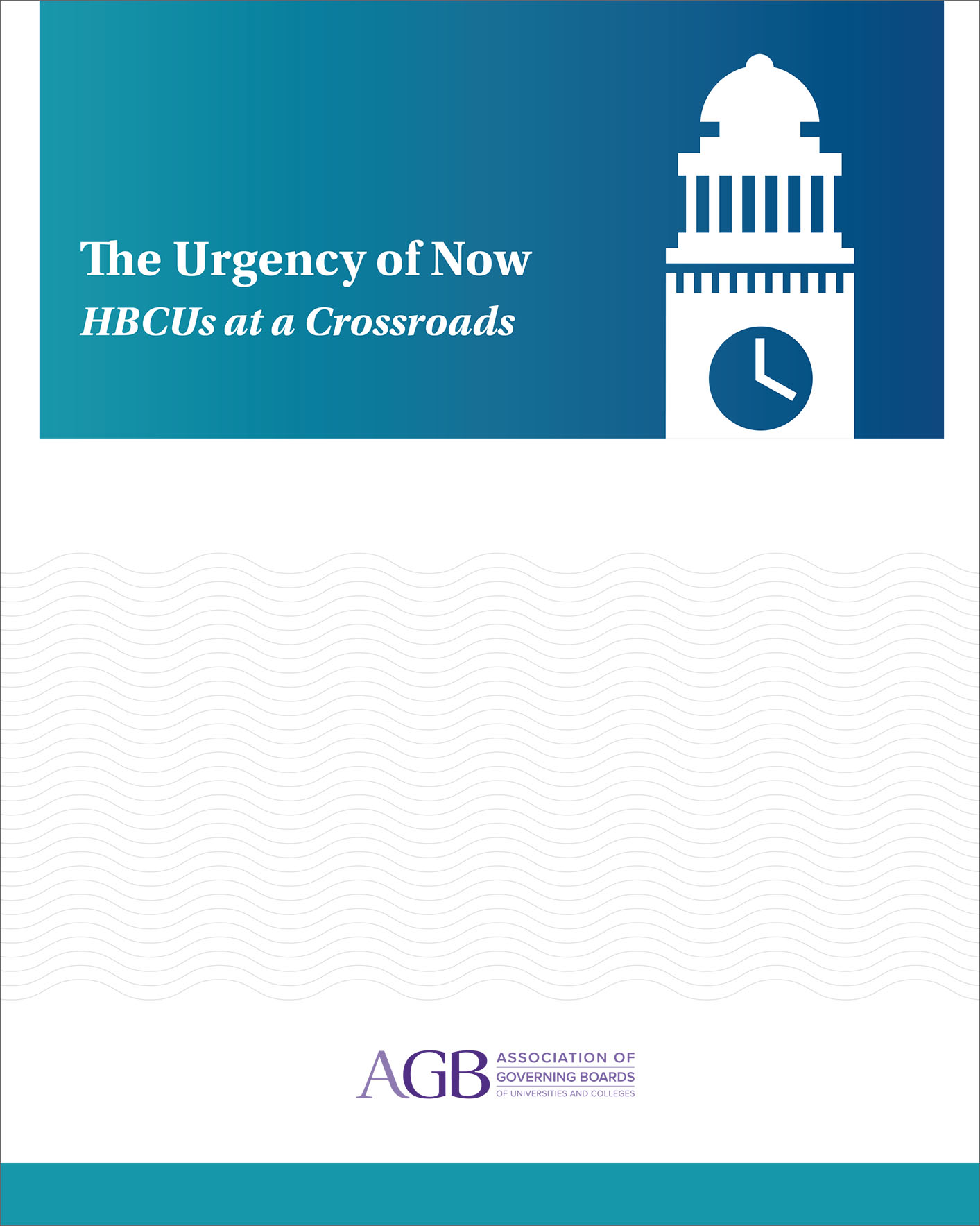
Historically black colleges and universities (HBCUs) hold an iconic position within American higher education. But HBCUs are at an inflection point. While HBCUs include iconic liberal arts colleges and leading research universities, many struggle financially and are finding it difficult to perform well in terms of student enrollment, retention, and completion. Although they remain bastions of opportunity for many low-income, first-generation black college students, their futures are unsettled. As they grapple not only with the same challenges that all higher institutions are confronting today—declining enrollments, rising tuition, student loan debt, and public skepticism about the value proposition of higher education, among others—they are also struggling against long-standing patterns of underfunding and small endowments and new competition from other sectors of higher education that are seeking to diversify their student bodies.
The Association of Governing Boards of Universities and Colleges (AGB) remains committed to strengthening HBCUs, and to that end AGB launched its Initiative for Strengthening HBCU Governance and Leadership in 2015 to assist HBCUs in addressing myriad challenges and creating positive, intentional change in their leadership and governance. During phase one almost two dozen institutions participated in leadership and governance institutes designed specifically for presidents and board chairs. The second phase, which produced the AGB paper Strengthening HBCU Governance and Leadership, was developed to provide a select number of institutions with sustained engagement in governance enhancement through a series of consulting services. And the third phase, which is the primary focus of this new paper, The Urgency of Now: HBCUs at a Crossroads, included diagnostic reviews that examined institutional governance, leadership, and business models and made recommendations for strengthening them.
By looking inward, tackling obstacles, reimagining long-functioning systems to support new goals, and adopting an energized vision for what it means to be an HBCU in the 21st-century higher education environment, HBCUs can chart a path forward to a reinvigorated future.
Publication Year: 2019

